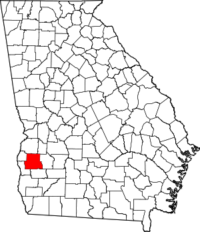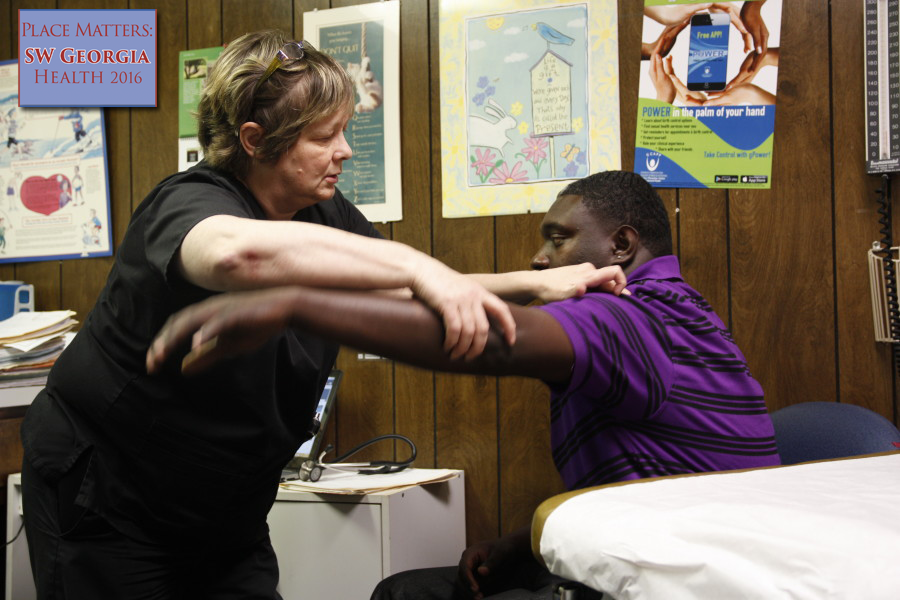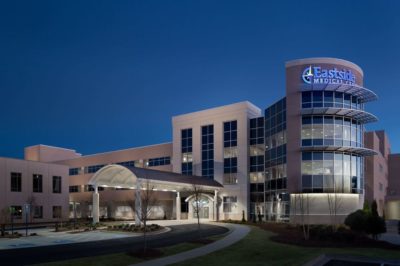All but two of Georgia’s 159 counties have at least one case of COVID-19.
Both these counties have very few people. Taliaferro, in east Georgia, is the least populous county in the state, with about 1,600 residents, and nearby Glascock has only about 3,000 people.

Nevertheless, some lightly populated counties in southwest Georgia have felt a significant impact from the pandemic.
Clay County has 15 cases of COVID-19, with one death. Baker County has 14, and two have died. Each county has about 3,000 residents.
In Randolph County, with 7,000 people, an outbreak in a nursing home has helped fuel a total of 111 cases, with five deaths. Terrell and Early counties also have more than 100 cases each, with populations of 8,800 and 10,300, respectively.
Dr. Karen Kinsell, the only physician in Clay County, said southwest Georgia infections have gone up since major outbreaks in Dougherty County, where COVID-19 spread rapidly in March.
“We all live close to Albany,’’ she said Sunday. Albany is the seat of Dougherty County and a regional hub in southwest Georgia.
Dougherty has reported more than 1,100 cases, with a stunning total of 72 deaths. The outbreak has been linked to two heavily attended funerals in Albany, one in late February and the other in early March. Phoebe Putney Memorial Hospital in Albany has reported more than 50 of its patients have died.
Lee County, which borders Dougherty County and has a population of 29,000, has 244 coronavirus cases and 15 deaths.

Clay County had its first COVID-19 case two weeks ago. Kinsell has closed her office amid the pandemic and is seeing patients only by telehealth. “You just had people come in [to the office] coughing, and you’d have a 90-year-old lady there,’’ Kinsell said.
Last week, though, new COVID-19 cases seemed to taper off, Kinsell said. “I’ve had fewer calls from people who appear to be stricken.’’
A new map from the state Department of Public Health shows the toll in southwest Georgia, a region with some of the state’s worst poverty rates and lowest health rankings. Here’s the link. The map shows the coronavirus case rate per 100,000 population.
Temporary hospital coming to Atlanta
Gov. Brian Kemp’s office announced Sunday that in a move to add surge capacity for COVID-19 cases, the state has signed a deal with a company to build a 200-bed alternate hospital at the Georgia World Congress Center in Atlanta.
The company, PAE, will construct the temporary facility to handle “potential COVID-19 patient surge for mild to moderate [non-ICU] illness levels excluding ventilator support.’’
The state’s projected peak for the disease is April 26, according to the Institute of Health Metrics and Evaluation.
Other cities hit hard by COVID-19 have set up such temporary facilities to handle an overflow from local hospitals, though these facilities have sometimes gotten less use than expected.
In New York City, military medical facilities inside Manhattan’s Javits Center convention hall and aboard the Navy hospital ship Comfort were touted as relief valves for New York hospitals overwhelmed by coronavirus cases. But both facilities are operating well below capacity, the Washington Post reported
And in Novi, Michigan, the U.S. Army Corps of Engineers is scaling back the size of a field hospital being built inside the convention hall, intended to relieve suburban Detroit hospitals overwhelmed by the coronavirus outbreak. A Corps of Engineers official said Saturday that the command is constructing 250-bed medical care facility instead of the original 1,100-bed plan announced earlier this week, Modern Healthcare reported.
Dave Smith, a consultant with Kearny Street Consulting, said Sunday that he believes the World Congress Center construction is a precautionary move to address a worst-case scenario at Georgia hospitals.
“It’s better to be prepared,’’ Smith said. But he also said that the COVID-19 increases in cases and deaths have become more moderate recently in Georgia. “I don’t think that the hospitals are full.’’

The Congress Center will use existing support through Grady Memorial Hospital in Atlanta, with “initial operating capacity available in one week.’’
“Across Georgia, we have partnered with existing health care infrastructure to greatly expand our surge capacity, and now we have a dedicated team building out a temporary facility at the Georgia World Congress Center for potential COVID-19 patient surge,” Kemp said in a statement. “We are working around the clock to prepare for future needs and ensure the health and well-being of our state. I am truly honored to have Georgia’s best, brightest, and most dedicated public servants working on this critically important project.”
Bed capacity has been a focus of the Kemp administration’s effort to handle the potential surge of COVID-19 patients.
Health care systems have identified hundreds of additional ICU and med/surg beds, Kemp has said. “We cannot take our foot off the gas,’’ he said. “There is no playbook for this pandemic.’’
Phoebe Putney is working on reopening a closed facility to deal with the Dougherty County caseload.

Meanwhile, in metro Atlanta, Eastside Medical Center in Snellville is adding beds. Piedmont Healthcare has announced that the Marcus Tower at the system’s Atlanta hospital is opening April 13, almost four months early, to make more ICU beds available during the COVID-19 pandemic.
The state has also purchased four mobile units, with 20 to 24 beds each, to be deployed to hot spots anywhere in Georgia.

